Custom Entity Views
What are custom Entity views?
Custom Entity views offer a way to further centralize and customize the appearance of information when reviewing the details of an Entity in L7|ESP. These custom views can display any data associated with the Entity in virtually any format, including maps, graphs, tables, and forms.
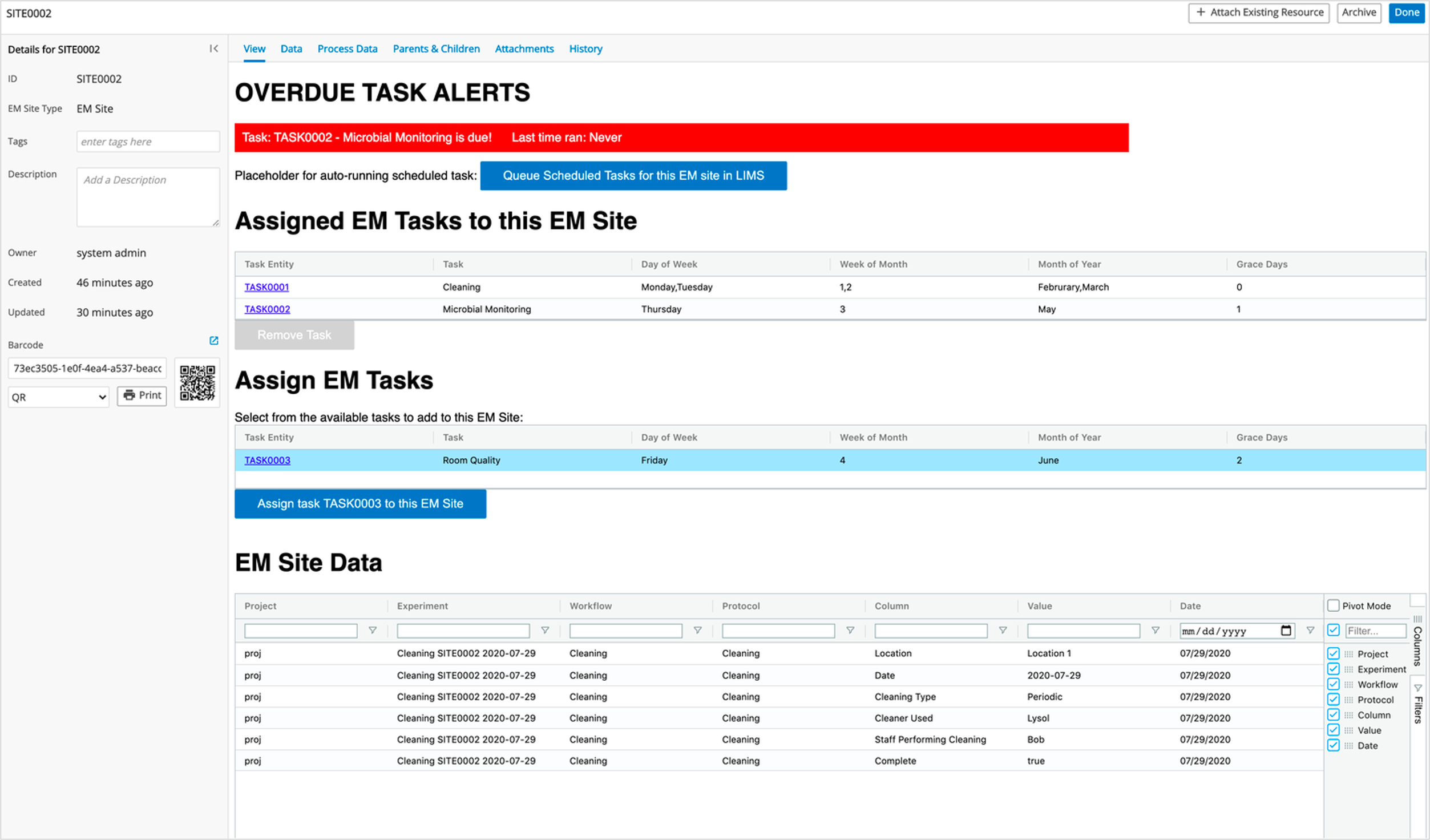
Creating custom Entity views
Creating custom Entity views is typically a task for Developers, given how code intensive it is.
As a Super User, you will work with a Developer to design the custom view. Once the view is created, you can copy the code into the corresponding code block for the corresponding Entity Class or Entity Type.
Note
Entity Classes are not currently version controlled. Custom views applied to an Entity Class will be automatically applied to all existing Entities that belong to that class.
What are the different ways to create custom Entity views?
Custom Entity views can be assigned to all Entities of a given class or type. The former includes all Entity Types assigned to that class, whereas custom Entity views assigned to a specific Entity Type only impact Entities of that type.
Note
A custom Entity view can be assigned to an Entity Type to override another custom view assigned to the corresponding Entity Class.
There are three (3) ways to customize Entity views for an Entity Class.
Go to: Builders (L7|Master) → Entity Classes → select the Entity Class
List View Template
List View Template creates additional tabs in the Details panel of an Entity Class app. By default, if one tab is created it will be named View. The complete list of Entities will still be accessible in the List tab.
Use case: imagine you want to monitor the running status of each instrument in your workplace, and that each type of instrument has been assigned to Entity Class “Instrument”. You could replace the default list view of Entities for this class with a 2D rendering of your workspace, depicting where each instrument is located, and color code each instrument by run status.
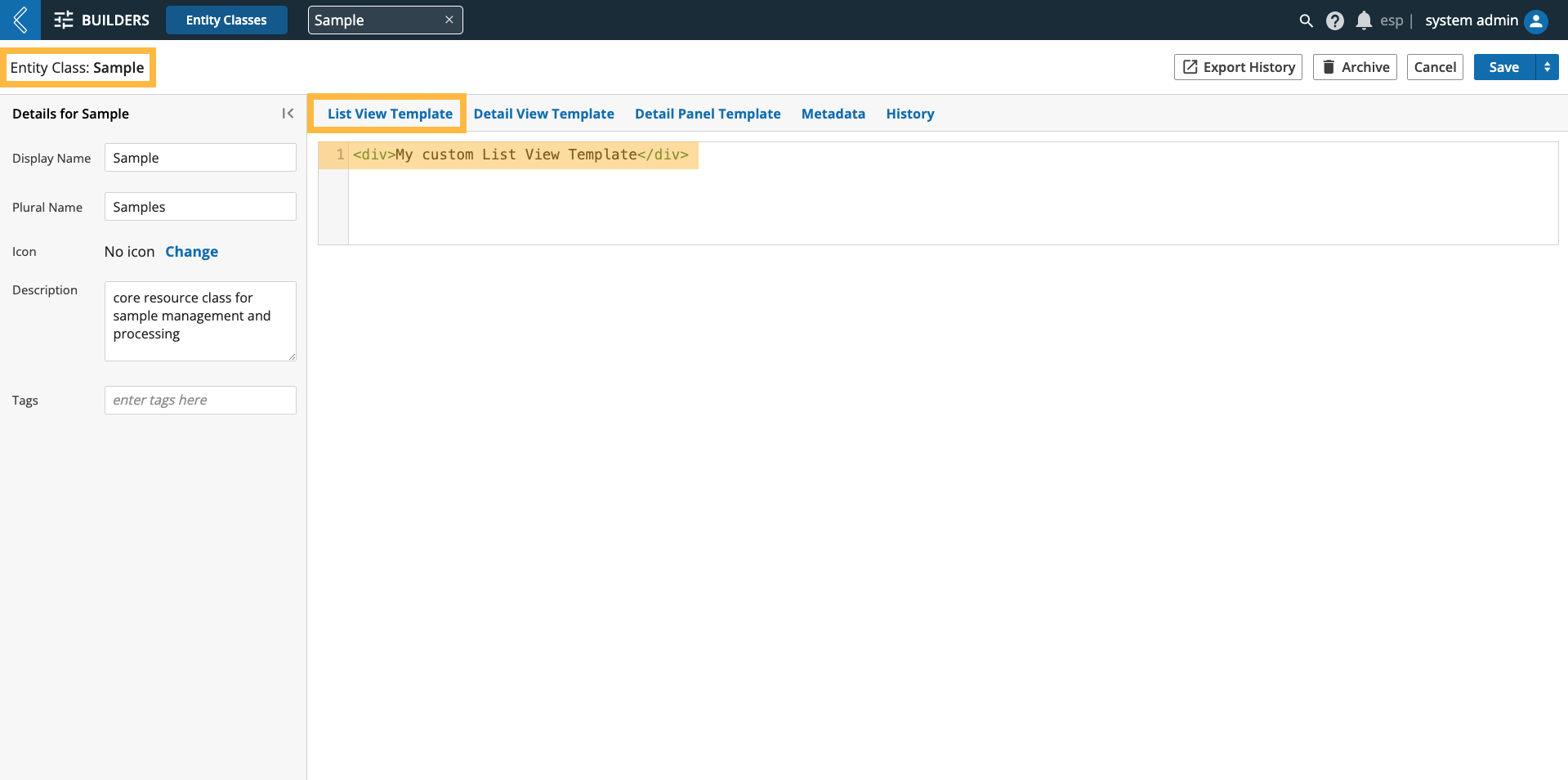 |
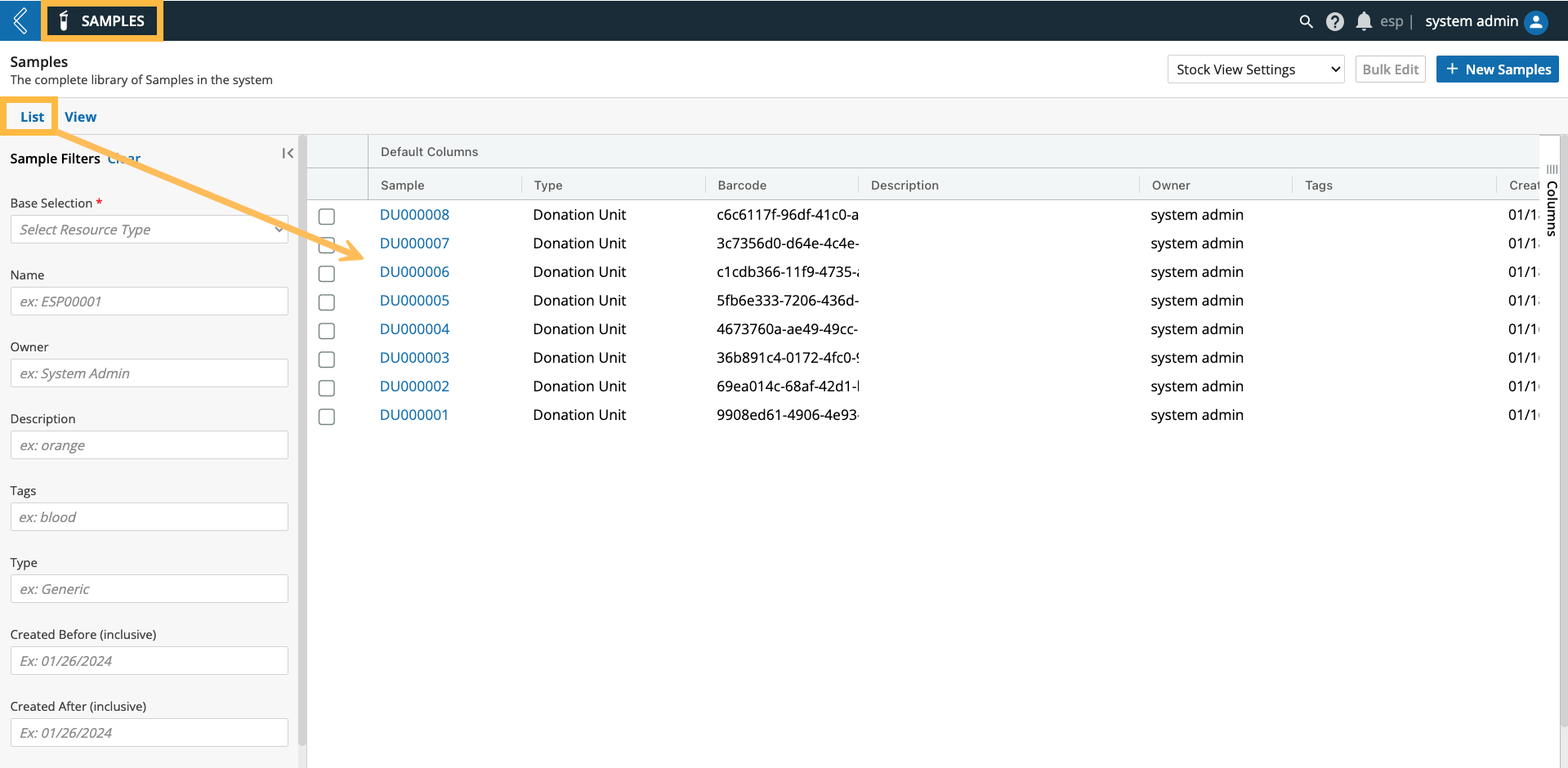 |
 |
Detail View Template
Detail View Template creates additional tabs (one per template) in the Entity’s main viewing window. If no Template Name is provided, the default tab name will be View.
Note
This is the only custom view available for Entity Types.
Use case: imagine you want to monitor the expiration date of all Entities that belong to class “Sample”. You could create a Detail View Template to:
Display the expiration date as a countdown to expiration.
Color it based on time to expiration.
Create a chart to show the distribution of Samples expiring soon.
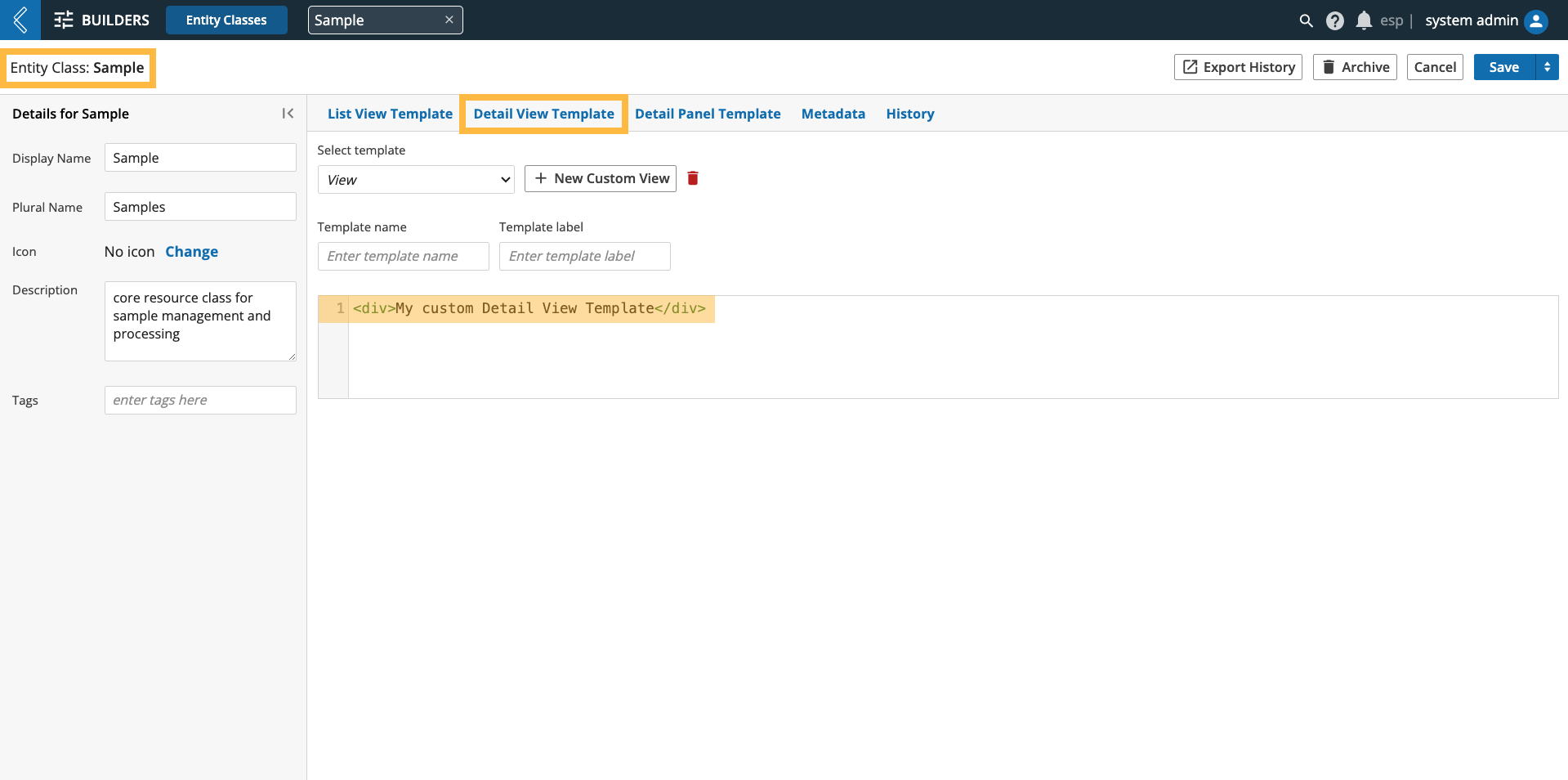 |
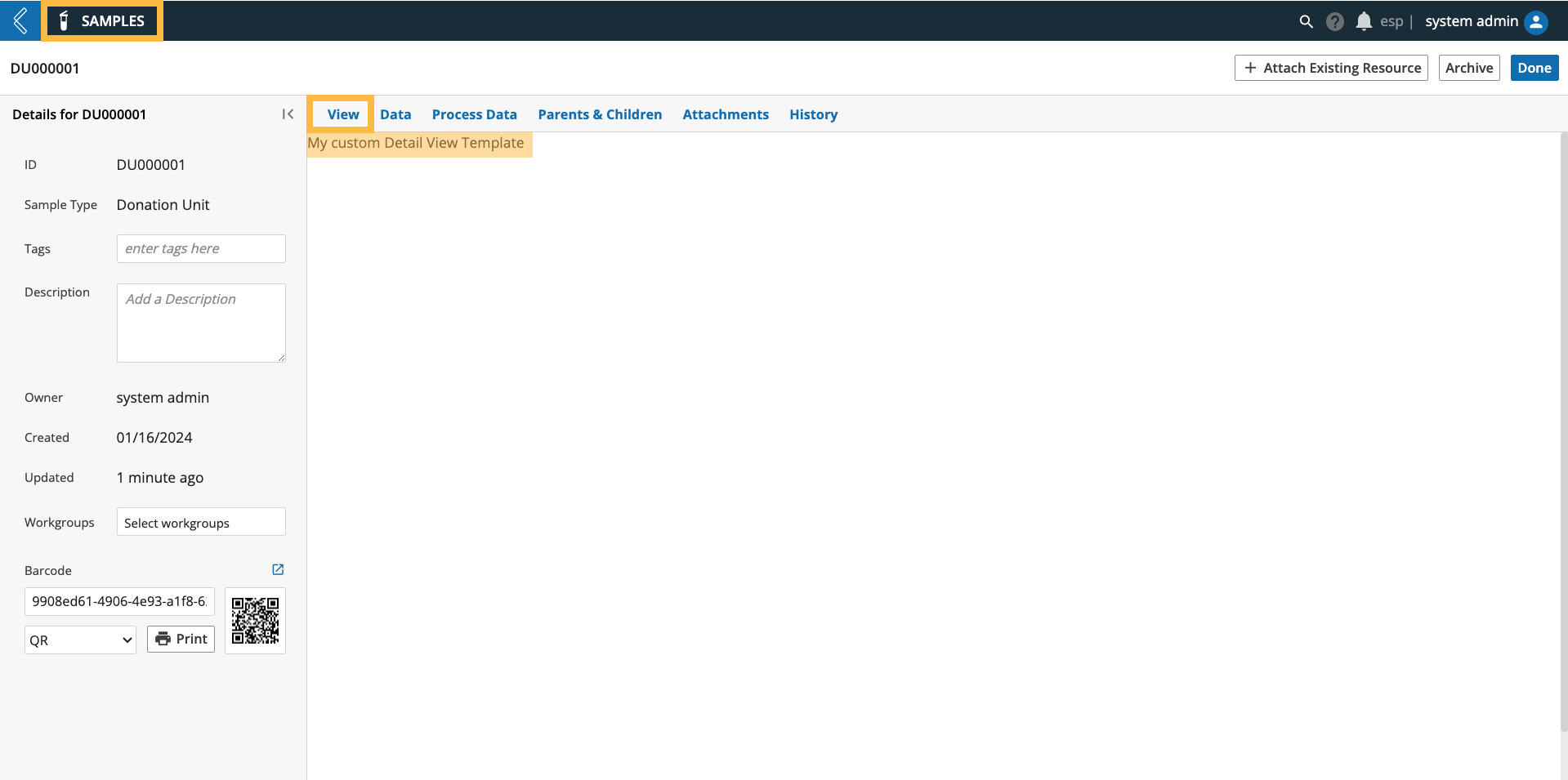 |
Detail Panel Template
Detail Panel Template creates collapsable/expandable sections in the Entity’s Details panel. By default, the basic Details will be collapsed and the custom detail view will be displayed.
Use case: imagine there is a core set of information that you wish to see when viewing any Entity of class “Sample”. You could create a Detail Panel Template to collapse the Entity’s Basic Details and display the information you care about most.
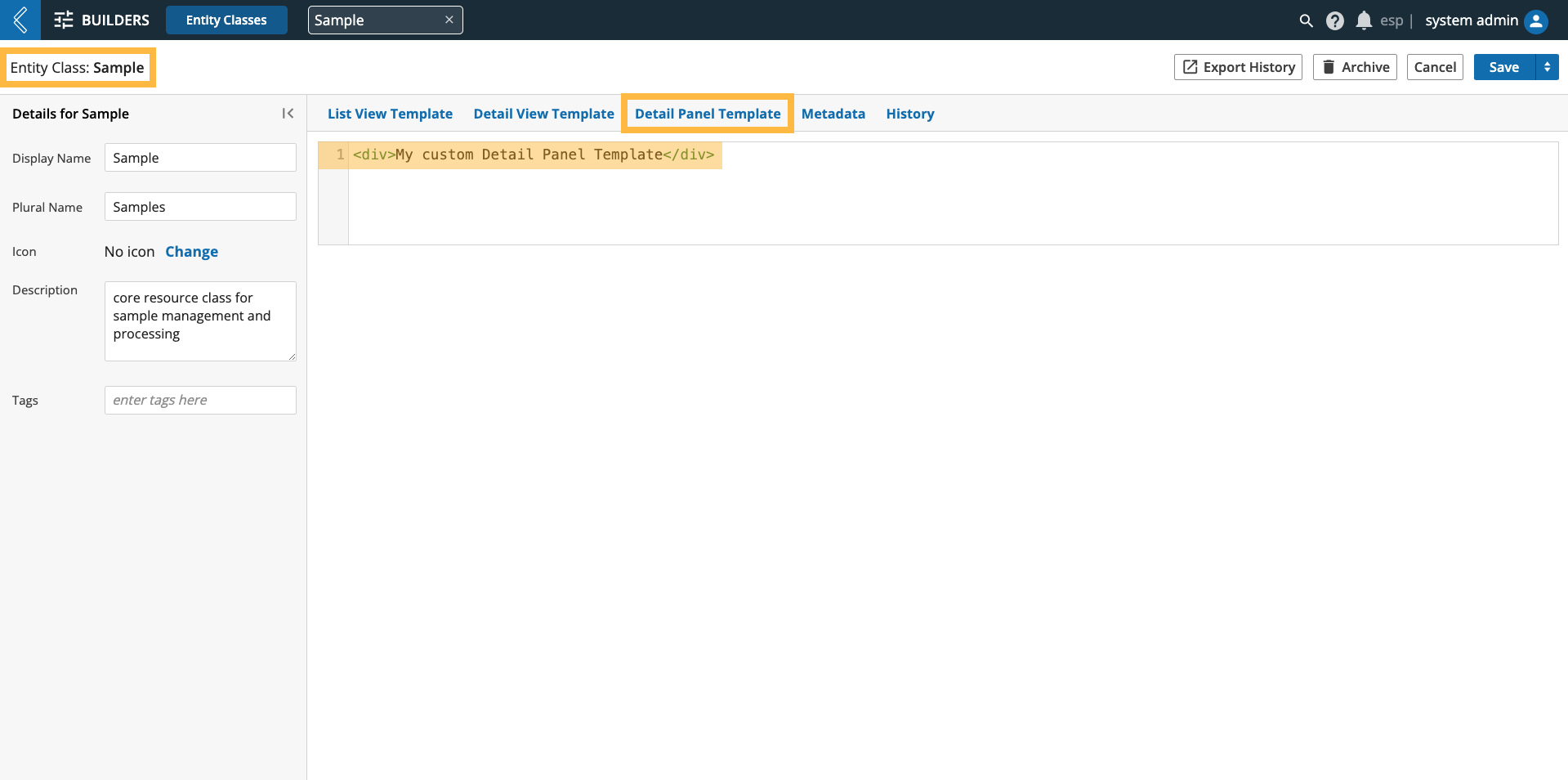 |
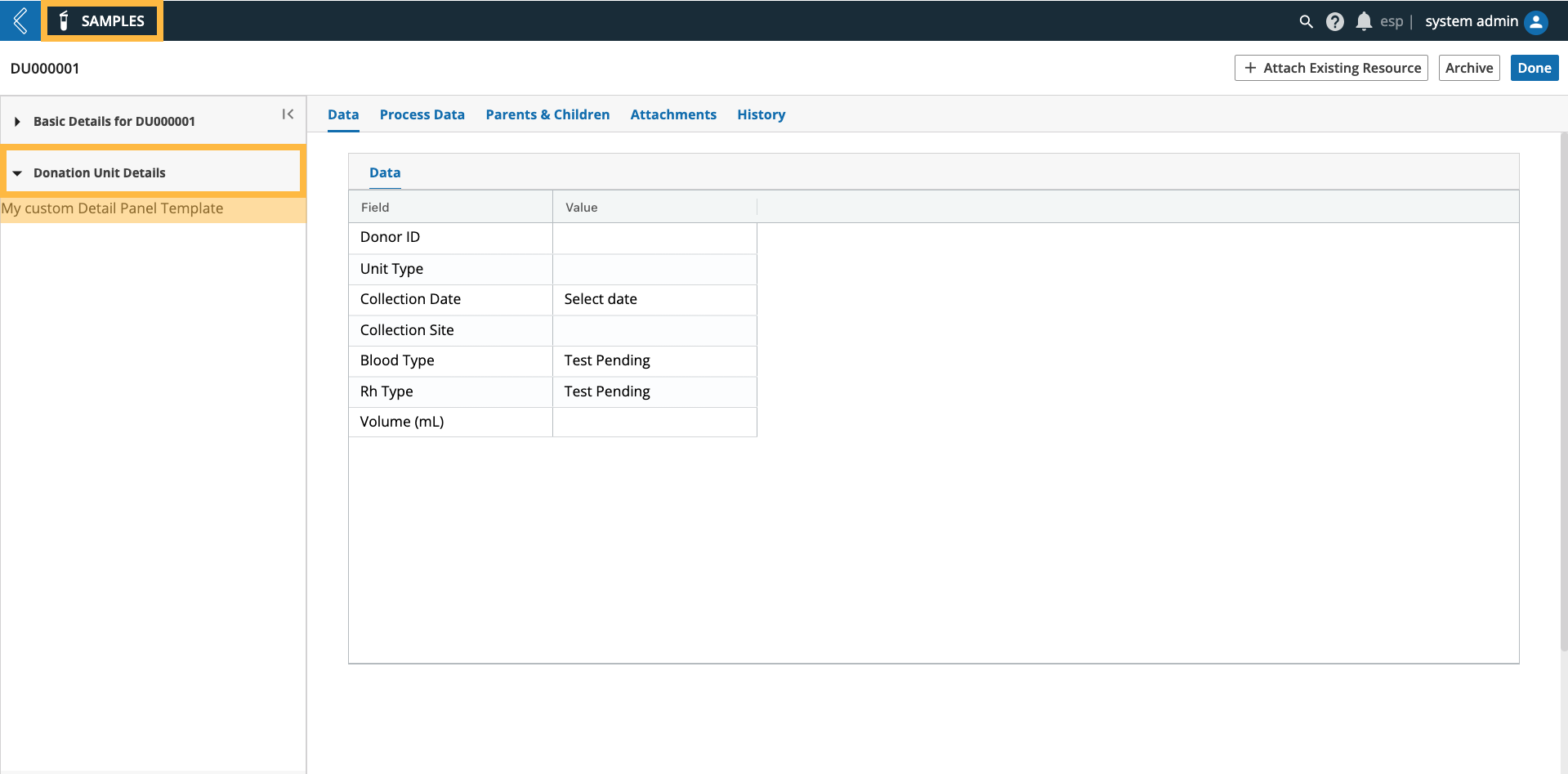 |